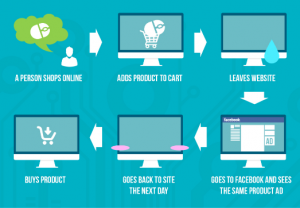Choosing the best recruiting tool for your company can be a daunting task. There are many tools to choose from, and each one has its pros and cons. With so much information available, it can be challenging to know where to start.
In this article, we’ll break down what you need to consider when choosing a recruitment tool for your company.
What Is A Recruitment Tool?
A recruitment tool is a software that allows companies to post jobs, manage candidates, screen applicants, and do many other things related to recruitment. There are many different types of recruiting tools and software on the market today – some with a very specialized focus while others cover a very large range of recruitment activities.
If your company needs an effective way to find qualified job seekers for open positions in your organization or department, then you’ll need a platform that can help you source new talent, post jobs, and manage your candidate pool. On the other hand, if you are a recruitment agency then you should aim for a tool that can centralize all your client interactions as well as all the points mentioned above.
Needs vary by organization and by circumstances, as we have seen with the rise of remote work.
Why Does My Company Need A Recruiting Tool?
Did you know that it takes an average of 36 days to fill a vacant job position? While many factors contribute to the overall success of finding the right hire, it all starts with recruiters posting a job listing, sourcing candidates, and screening through hundreds of resumes. This takes up a lot of valuable time, and if the candidate doesn’t accept the job offer, after all is said and done, you’re back at square one.
Recruiting tools are the perfect solution for recruiters who need to quickly and easily post a job listing, identify qualified candidates through search filters, sort resumes by candidate relevance score – leveraging on the latest technologies to ensure time is spent efficiently.
Recruitment software can not only help increase the visibility of your jobs online such as job boards or social media but also help companies ensure they are targeting the most relevant channels through analytics – the ones that will yield the best candidates for each job.
While we’ve listed a few of the many different options available, the right recruitment tools for your company may look different from other companies depending on your individual needs and company goals. In this guide, we’ll break down how to choose the best recruiting tool for your company.
Recruitment Challenges and Solutions
If you’re not sure what type of recruitment software you should be searching for, it’s wise to consider the challenges you commonly face in your field. For example, do you struggle to find quality candidates, or are you trying to find a way to manage applications without spending your entire day on it? Understanding what problems your recruitment team faces the most will help you discover the most essential features to look for when searching for your recruitment tool.
Challenge #1: Application Management Takes Up Too Much Time
If you find that it takes too long to manage your applications, you’ll want to find software that can help you become more efficient. Some of the features you might want to consider includes:
- – A singular program that can manage all details of the application process from the initial application to onboarding. This way, you don’t have to search through multiple programs for the information you need manually.
- – Automated screening so you don’t have to waste your time looking through resumes that aren’t relevant for the open job.
- – The ability to run advanced searches or be provided by AI recommendations is key to leverage your candidate database. This way, you’re able to find candidates simply by searching for a specific qualification or skill the candidate possesses, greatly reducing sourcing time.
- – Automated responses for candidate e-mails, so you’re not writing every e-mail by hand. This may include e-mails for candidates you move forward to the interview stage, rejection e-mails, or even job offer templates, data processing consent requests,…
Challenge #2: You Want To Improve Your Hiring Skills Through Analytics
If you’re finding that your recruitment strategy is missing analytics or data-driven decisions, you’ll want to find features that help you reimagine your hiring strategy, including:
- – Looking at the productivity of your recruitment process and finding out which areas are taking up too much time or money to see where you can improve the process.
- – Tracking analytics on career sites to see where you’re getting most of your traffic, where people are coming from, and how many people are seeing your job posts.
- – Engagement analytics to see how many visitors turn into applicants and what pages influence their decision.
Challenge #3: You Want To Attract Higher Level Job Applicants
If you strive to find quality candidates for your open roles, you might want to focus on software features, including:
- – Job board integrations feature so that you can post all of your listings onto multiple sites without having to visit each one manually.
- – Customizable job boards where you can add information about your company and job roles to attract quality candidates.
- – Social media marketing integration that will automatically post your jobs onto popular social media apps such as Facebook, Instagram, or LinkedIn.
- – SEO-friendly job descriptions so you ensure the right candidates can find your company when using search engines for their next job.
What Are Key Features Of A Good Recruiting Tool?
Before choosing a recruitment tool, you should carefully consider what features are most important to your company. Here is our list of must-have components every recruiting solution needs:
- – Makes Your Recruitment Process More Efficient: The number one thing that any recruitment tool or process should feature is efficiency. It should provide your team with an easy way to post jobs or find the right talent quickly without any hassle or frustration. The goal is to assist with your recruiting process, not make it more difficult.
- – Adaptable To Your Workplace Needs: The right recruitment tool should provide your company with the ability to adapt and grow as needed. For example, if you’re a small business looking for an applicant tracking system (ATS). While you might only need to track a few dozen applicants this round, as your company and needs grow, it should have the ability to take on a higher threshold of applicants efficiently, providing the ability to scale with your company.
- – Easy To Implement Process: You should choose a recruitment solution that is easy to implement and quick to set up. No one wants their time wasted when it comes to finding the right tool for their business, so they need something that can be implemented quickly with minimal hassle or frustration on your end. Cloud-based solutions are the obvious choice as they only require a web browser and an internet connection to get started
- – Ability To Manage Hiring Compliance: Great recruitment tools ensure that you’re within compliance regarding hiring laws such as privacy laws (GDPR, PDPA,…) or equal employment opportunity regulations.
- – Offers Flexibility: When choosing a recruitment tool, you should select one that gives your company the flexibility to customize it based on your company or industry-specific needs. This can range from modifying the recruitment stages, customizing application forms, or even choosing what information to emphasize when viewing a candidate profile.
How To Choose The Best Recruiting Tool For Your Company
Now that you know what type of recruitment tools exist on the market today and why it makes sense to have one in place, it’s time to dive into how to choose the best recruiting tool for your company. Here are the most critical steps you need to take to choose the right recruiting tools.
1. Understand Your Companies Needs
The first step to choosing the best recruiting tools for your company is to understand what you need. What are the main pain challenges in your current recruiting process? Are there any processes that technology could make more efficient? Do you have integration needs with other software products?
The easiest way to identify where your company needs the most help is to understand which parts of the customer journey you need a recruiting tool to help you with. The most common areas include:
- – Recruitment Marketing: Do you find yourself spending a lot of time advertising your positions or trying to get more candidates interested in your role? If so, you might need recruitment tools to help with your recruitment marketing.
- – Application: Do you find it hard to sort through candidates, or it takes too long to get resumes from candidates? If so, it might be time to use an applicant tracking system to help you manage applicants.
- – Hire: Does it seem like once you hire a new employee, there are many spreadsheets, paperwork, and orientation materials to go through? If so, it might be time to work with an employee onboarding or management platform to help alleviate the stress of onboarding.
Once you know what types of issues exist within your company, finding a solution becomes more manageable.
2. Identify The Recruitment Tool Features That Are Important To You
Once you know your company’s main pain points, it is time to identify the features that are important to have within a recruiting tool. You may find yourself using different products for each step of the customer journey or using one product across all areas.
Regardless, it’s essential to understand the different features each software offers and how they can contribute to your overall success when it relates to your biggest recruiting challenges.
3. Evaluate and Compare Recruitment Tool Companies
Now that you know what type of recruiting tools are out there and the features they offer, it’s time to choose which one is right for your company.
Some companies may not have a ton of resources or budget available, while others might be willing to invest more in their recruitment process. Regardless of where your company falls on this spectrum, here are four key places to look when evaluating different products:
- – Pricing Plans: When looking at pricing plans, make sure you understand precisely how much each feature will cost and if it fits within your budget. While pricing plans of some software are transparent and easy to understand, most options out there do not share publicly their prices and require the purchase of costly add-ons for basic features. A point to consider is also implementation costs as some companies can charge a hefty fee before you even get to try the software.
- – Integrations: Does the product integrate well with other software systems that you use within your company?
- – Reporting and Analytics: Very important as they will allow you to improve on your current processes. What type of reporting does the product offer? How easy is it to generate reports, and how deep can users dig into their data?
- – Customer Support: How quickly can you speak with a customer success rep? What are the timezones at which that customer support can be reached? What are the resources available to users such as documentation articles or video guides? Do you like the language they use when talking about their products, or do you feel lost in the online documentation that doesn’t seem helpful? Is training provided to all users before launching the new software?
These are all critical questions to ask yourself when evaluating different recruiting tools to ensure you pick the right one for your companies needs.
4. Demo Or Try Out Your Top Recruiting Tools
Once you have decided on a few products that seem like they might work for your company, the next step is to demo or try out those companies.
This doesn’t mean signing up for a paid account but rather trying out product features within their free trial period without spending any money. This will help give you a better idea of what kind of experience each recruiting tool provides and how it can directly make your life easier when hiring employees.
When comparing different tools, don’t just focus on which one has the most features or looks pretty on paper because sometimes these things aren’t as crucial as having simple, functional software.
5. Implement Your New Recruiting Tool
Once you have found the recruiting tool that works best for your company, it’s time to implement it into your current systems. This might include completely shutting down the old system and immediately starting the new system or slowly integrating the new system into your current workplace. Migrating the data should be an important point of discussion with the software provider as to not lose your current candidate database. Make sure training sessions are provided for your team to ensure a smooth transition.
What Are The Different Types Of Recruitment Tools Available?
There are many tools available in terms of recruitment tools and software. However, depending on your needs and your goals, you might fall into one or multiple categories of the type of tools you need for your business.
Applicant Tracking Systems (ATS)
Applicant Tracking Systems, otherwise known as ATS, are tools that are designed to help with your recruitment process as a whole. They act as an all-in-one platform and some platforms include some of the tools listed below. ATSs include a lot of features but at their core, they are designed to centralize all applications and manage candidates throughout the recruitment process. For example, they facilitate candidate database management, collaboration, communication, job ad posting, candidate screening, and the list goes on. Some ATSs even include CRM tools so that agencies can manage their leads, clients, jobs, and candidate from a single software.
Job Boards
Job boards are a recruitment tool that allows employers to post job openings for free or at a low cost. These recruitment tools help to screen applicants based on the pre-requisites that the company specifies and pushes forward eligible candidates for employers to review. This tool is used by both small and large businesses to find the right candidates without too much of a hassle.
Candidate Assessment Software
Candidate Assessment Software is a recruitment tool that focuses on improving the candidate experience and reducing time-to-hire by allowing employers to create tests within their system. This software enables recruiters to test candidates for specific skills or job requirements to determine if they fit your company’s needs. These types of testing tools can be used in various industries, whether that’s a technical field such as analysts, programmers, or customer service roles in retail or hospitality.
Interviewing Software
Interviewing software is a recruitment tool that allows recruiters to create, manage and distribute interviews directly from the recruiting software. This results in a better candidate experience because they can take their interview whenever convenient for them and submit their answers through video or voice. This helps your team determine if this is a worthwhile candidate while saving your team time interviewing multiple candidates.
Candidate Relationship Management Software
Candidate Relationship Management software is a recruitment tool that allows recruiters to keep track of all candidate information and activities. This can be an excellent way for employers to ensure they are always up to date on the status of each applicant because it helps them stay organized with files and applications from potential candidates. This software tends to work with other software like ATS. While it can be used alone, this essential software still requires a lot of day-to-day updating and effort from the team using it.
Find The Right Recruitment Tools For Your Company
When you have all of these recruitment tools in place, it can be a great help to your business. They allow recruiters and hiring managers to find qualified candidates faster than they would without them. In addition, by choosing one or multiple software for each step in your company’s recruiting process, employers will be able to attract new talent while reducing costs and time-to-hire..
Business & Finance Articles on Business 2 Community
(28)
Report Post





